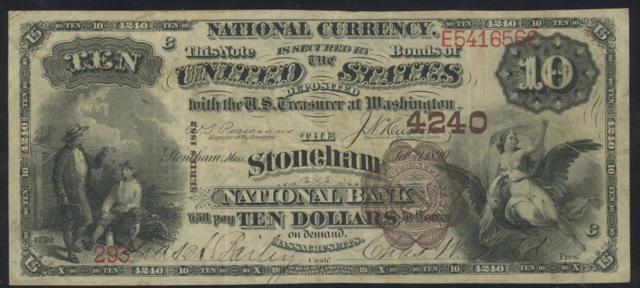SIMILAR IMAGES
IMAGE INFORMATION
EditTen Dollar Bill from Stoneham National Bank 1882
National Bank Notes were United States currency banknotes issued by banks chartered by the United States Government. The notes were backed by United States bonds the bank deposited with the United States Treasury.
Background
Prior to the American Civil War, state banks issued their own banknotes. During the Civil War, in 1863, the National Banking Act established a system of National Banks which were empowered to issue National Bank Notes subject to federal oversight. The chartering of banks and administrative control over the issuance of National Bank Notes were the responsibility of the Office of the Comptroller of the Currency. In 1865 the Congress enacted a 10% tax on state bank note issuance making it unprofitable for state banks to issue notes, and thus restricting the circulation of privately issued banknotes to the National Banks.
The Program
From 1863 to 1935, National Bank Notes were issued by banks throughout the country and in U.S. territories. Banks with a federal charter would deposit bonds in the U.S. Treasury. The banks then could print banknotes worth up to 90% of the value of the bonds. The federal government would back the value of the notes - the issuance of which created a demand for the government bonds needed to back them.

